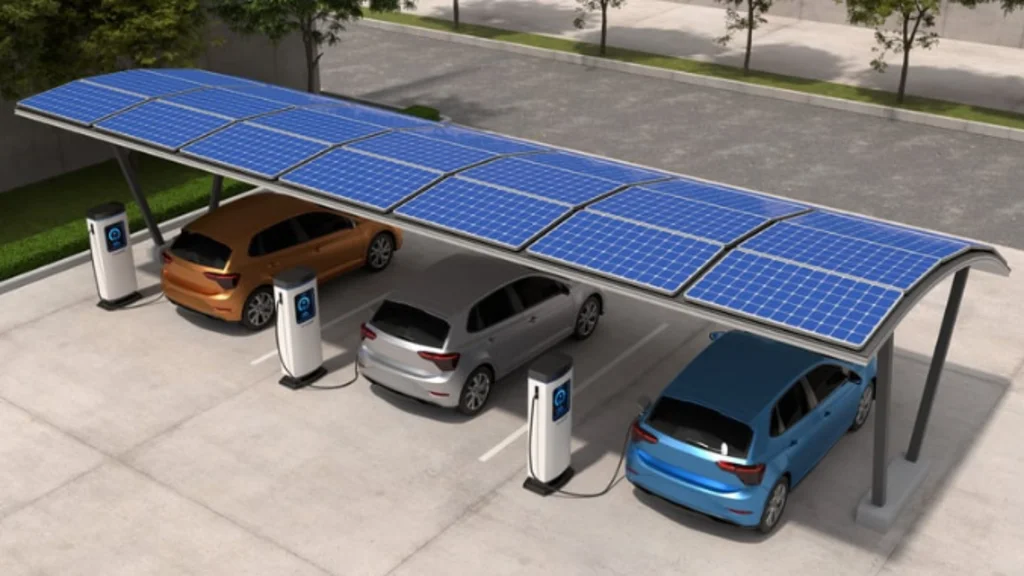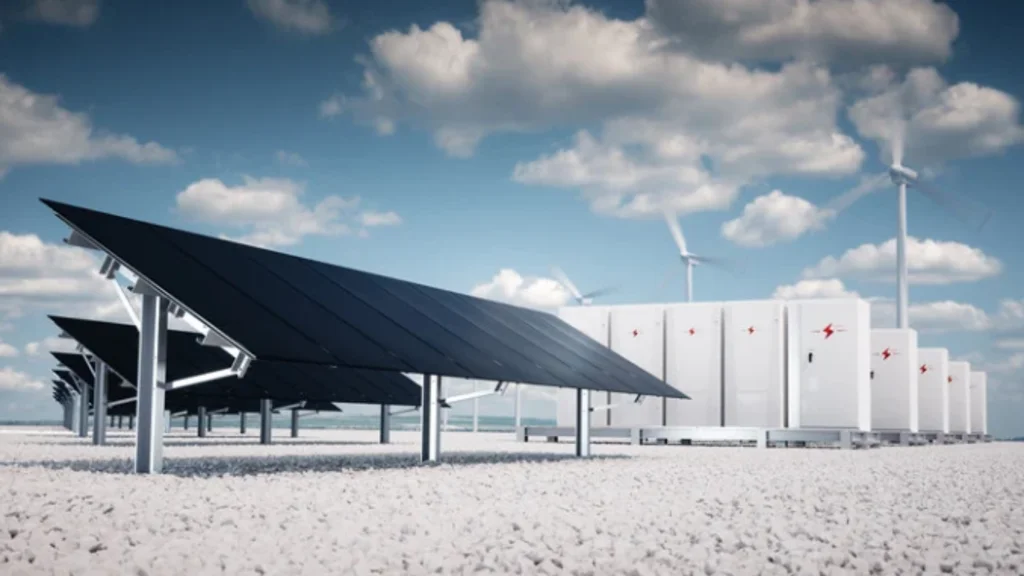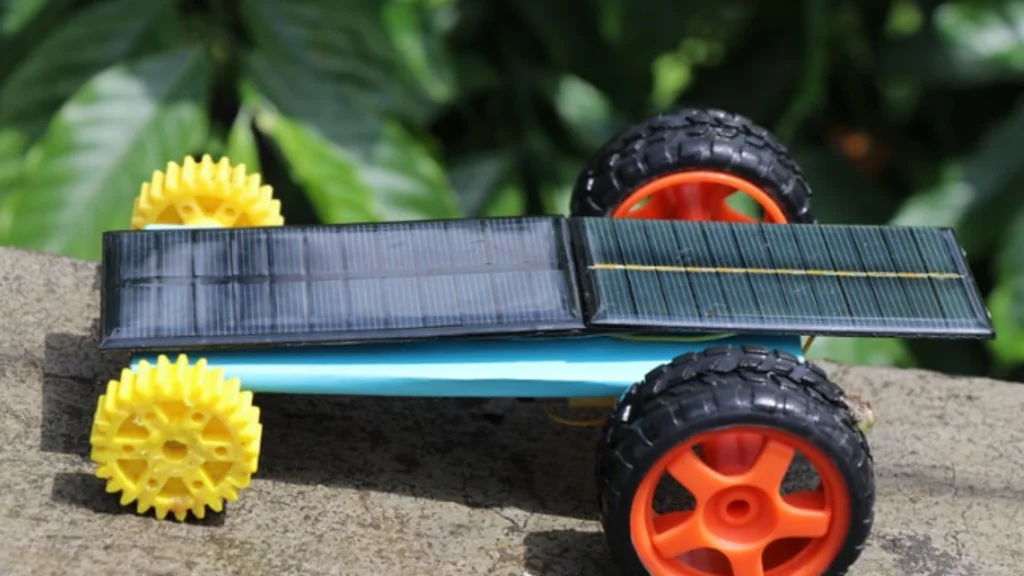Have you ever caught yourself daydreaming about what if your car could recharge just by soaking up sunlight in the driveway? Ten years ago, this idea sounded like something from a sci-fi movie. But today, it’s inching closer to your garage. Not in some distant future, but within the next couple of vehicle cycles.
With fuel prices rising and solar technology improving annually, solar cars are becoming more than an eco dream; they’re a serious option for energy-conscious homeowners, small business owners, and commuters alike. This guide breaks down how they work, why they matter, and how to prepare your home for the next chapter in clean mobility.

Solar Cars Explained: How They Work and Why They Matter
Solar cars are electric vehicles (EVs) with built-in solar photovoltaic (PV) panels. These panels convert sunlight into electricity, which can either power the car directly or be stored in its battery system to extend the range.
Rather than relying entirely on grid electricity, solar cars sip energy from the sun, and it’s enough to make a noticeable difference. For instance, Lightyear and Aptera, two of the most talked-about players in this space, have developed vehicles that claim to deliver up to 40 miles of solar-generated range per day. In sunny regions, that’s more than enough to cover most daily commutes without plugging in.
A homeowner in Arizona we spoke with recently said:
“I haven’t plugged in my Aptera for over a month. My rooftop solar plus the car’s onboard panels keep me topped up even when running errands daily.”That’s the appeal: a lifestyle where energy independence extends from your rooftop to your driveway.
How Many Solar Panels Would You Need to Charge an EV at Home?
If you’re considering running your EV entirely from home solar, here’s what the numbers look like:
- A typical EV with a 60 kWh battery requires about 10 to 12 solar panels (each around 400W).
- With 4 to 6 hours of peak sunlight daily, you can generate enough power for a full recharge every 1–2 days.
- A Level 2 EV charger (240V) is highly recommended for faster, more efficient charging.
- A solar battery can store excess energy for use at night or on cloudy days.
What this means is simple: if your home already has solar—or you’re planning to install—it can double as your personal “fuel station.” No gas pumps, no peak-hour charging fees, no monthly surprises from your electric utility.
Why Don’t All EVs Have Solar Panels Built In?
If the technology is available, why aren’t all electric vehicles equipped with solar panels? It’s a fair question and the answer has to do with physics, economics, and engineering limitations.
The reality:
- Limited surface area: A standard sedan doesn’t have enough space to hold sufficient solar cells to generate a full charge. Even with high-efficiency 22% panels, you’re only looking at 1–2 kWh per day from a rooftop-sized area.
- Heat sensitivity: PV panels become less efficient in high temperatures, exactly the conditions you find on a sunlit car roof.
- Weight and cost: Adding solar increases the car’s weight and production cost, which can offset the energy gains in many models.
Still, the innovation is moving quickly. New materials like flexible solar film and integrated body panel PV could eliminate these obstacles. By 2026, self-charging vehicles may become viable for a broader market.

Solar Charging at Home: What an Ideal Setup Looks Like
Even if you don’t own a solar-powered car (yet), powering your current electric vehicle with sunlight is entirely possible today. A good home setup includes:
- Rooftop array of 10–16 solar panels, depending on your energy needs and driving habits.
- A solar battery backup, like Tesla Powerwall or Enphase, to store unused energy.
- A smart inverter to convert solar DC to home-usable AC and manage system efficiency.
- A Level 2 EV charger, installed in your garage or driveway.
Not only does this allow you to charge at home, but it also provides the kind of grid independence that many homeowners dream about. A Florida family recently shared that their solar setup kept their electric vehicle and refrigerator running during a full-day blackout caused by a tropical storm.
Visit here: rv solar panels kits
Common Mistakes People Make with Solar EV Charging (And How to Avoid Them)
1. Neglecting Panel Cleaning
Dust, bird droppings, or even a light layer of pollen can reduce panel output by up to 20%. Cleaning them every two months, or right after a storm is essential.
2. Ignoring Inverter Alerts
Inverter lights and digital logs provide early warnings if something’s wrong. Red lights or blinking indicators often mean something needs service or has tripped.
3. Wrong Charger for Your Setup
Some homeowners install ultra-fast chargers that overwhelm their system, or slow ones that underperform. The sweet spot? A 7–11 kW Level 2 charger that matches both your EV and solar output.
4. Draining Solar Batteries Too Deep
Allowing your battery to drop to 0% frequently can reduce its lifespan. Keep it between 20% and 80% for optimal performance.

Are Solar Cars Available Now?
Yes, but they’re not parked at your local dealership yet. Here are a few pioneering examples:
- Lightyear 0 – A high-efficiency, aerodynamic solar EV offering up to 43 miles/day of solar range.
- Aptera – An ultra-light, futuristic three-wheeler that can run for weeks without charging in sunny areas.
- Sono Sion – A solar-integrated urban car, with solar cells on doors, hood, and roof (currently paused in development but widely cited as an early innovator).
These models are still in limited release or pre-order, but they represent the direction the industry is heading. More importantly, they validate that the concept works and can be scaled.
Why Solar Cars Represent More Than Just a Trend
Solar vehicles aren’t just about saving on your electric bill. They’re a statement about autonomy, resilience, and pushing for better tech in a warming world.
In the big picture, they offer:
- Cleaner cities with fewer tailpipe emissions.
- Lower grid strain, especially during peak charging hours.
- Personal energy independence, no longer reliant on fossil fuels or unstable utility markets.
According to a 2024 report by BloombergNEF, global electric vehicle (EV) sales are projected to surpass 50% of all new car sales by 2032. Solar-enabled electric vehicles (EVs) could represent a growing slice of that pie, especially in sun-rich areas such as the U.S. Southwest, Southern Europe, and Australia.
Ready to Start Driving on Sunlight?
Even if a solar electric vehicle (EV) isn’t in your garage yet, you can start your transition right now. Here’s how:
- Assess your solar system: Is it large enough to charge an EV? A solar installer can calculate this based on your usage and the orientation of your panels.
- Upgrade your charger: A smart Level 2 unit with small solar panels synchronization will improve efficiency and safety.
- Keep your panels clean: Set a reminder every 60 days to inspect and clean them.
- Watch the market: Keep tabs on Lightyear, Aptera, and future releases from traditional automakers dipping into solar.
The path to energy independence doesn’t begin with a car it begins with a choice. And solar is making that choice cleaner, smarter, and a whole lot brighter.

FAQs
Is there a solar-powered car?
Yes. Models like the Lightyear 0 and Aptera feature built-in solar panels that can power the vehicle directly from sunlight, offering limited but meaningful daily mileage without requiring a plug.
What are the disadvantages of a solar-powered car?
Solar cars still face limitations: restricted energy generation due to small surface areas, variable performance in cloudy conditions, and higher production costs. They’re also not yet widely available for mass purchase.
Can you charge an electric car with solar panels?
Absolutely. With a home solar system sized correctly typically 10–12 panels, you can charge most electric vehicles (EVs) fully. Add a battery backup and smart charger for maximum control and off-grid flexibility.
Which country has the highest EV adoption?
Norway holds the global lead, with electric vehicles (EVs) accounting for over 80% of new car sales. Policies such as zero tax on EVs, free public charging, and lane access have made it a global model for clean transportation adoption.











